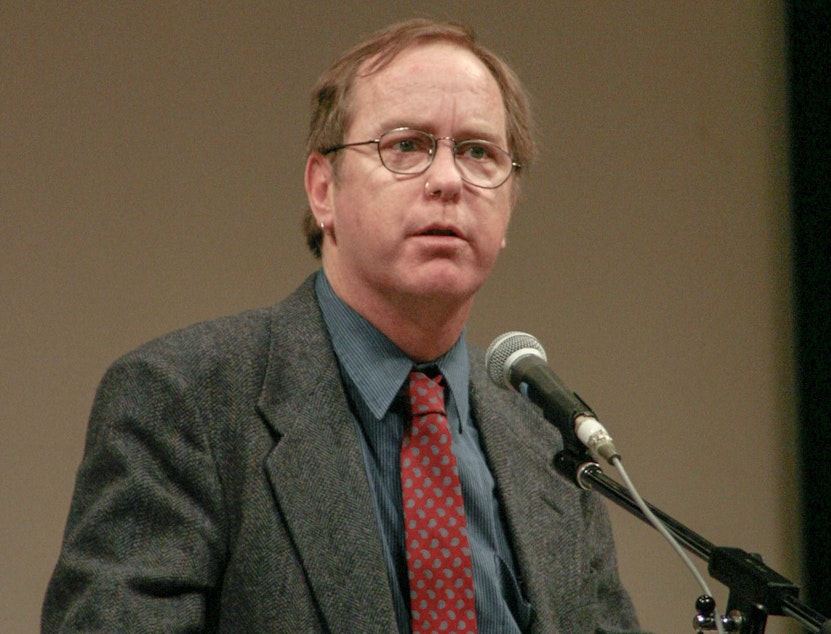I was a young gay man in the 80s who got by on survival sex

The Seattle Times dropped a bombshell on the local political scene last week, publishing a lengthy account of interviews with three separate men who claim that Mayor Ed Murray paid them for sex while they were underage gay drug abusers in the 1980s.
The men – two of whom met Murray beginning in 1980 when he lived in Portland, and the third, a man who filed a civil suit alleging Murray did the same to him beginning in 1986, after Murray had moved to Seattle – gave similar stories.
This is truly gnarly stuff. Money for sex, which was then used to feed drug habits. These sort of allegations, when credible, can abruptly end political careers. No doubt would-be mayoral candidates, scared off this year by Murray’s formidable war chest, are looking anew at their contact lists.
There’s a lot I don’t like about Murray’s record as mayor, starting especially with how he exploits our most vulnerable residents for political points while doing far less than you’d think to help them. But this is much bigger than that. The civil suit doesn’t even need to go anywhere for Murray’s career to be over. The court of public opinion can do that if the allegations are bad enough, and the details here sound really, really bad.
And yet there are plenty of people, especially gay men of A Certain Age, who are defending Murray. To understand why, you have to appreciate two critical bits of context that won’t be included in most news accounts, because those accounts are being written by people who weren’t young gay men in the ’80s.
Sponsored
I was.
The very first national gay/lesbian march was held in 1979; the gay rights movement was still a fringe cause in its infancy, and gay male culture was still in thrall to the sexual promiscuity of the ’70s and the reflexive secrecy of since forever. There were no positive role models on TV, or anywhere else, for young gay men.
And, so, a common feature of gay male culture of the era was the notion that young men needed to be “initiated” into their gayness by older, usually middle-aged men. I helped pay for my college expenses (at considerable higher rates than Murray’s more desperate teens supposedly got) catering to the edgier desires of older men like Murray – horny or lonely or predatory or all three. All of them – ALL OF THEM – rationalized their interest in me as not just lust for a hot, barely-of-age twink, but as passing their hard-earned carnal wisdom on to the next generation.
Almost nobody defends those types of practices today. But 30 years ago? It was a cultural norm. As personally nauseating as I find the allegations – and I didn’t care for such men too much back then, either – part of me wants to give Murray a pass. How fair is it to hold him to a shifted cultural standard of a generation ago, and alleged crimes long past the statute of limitations, just because he’s now become a powerful public figure?
But then there’s that second bit of context. AIDS.
Sponsored
I was really, really lucky; my sex work ended just before AIDS (initially, the “gay cancer”) exploded on the scene. We knew how it was spread long before we understood what it was. For a full decade until initial treatments were developed that could keep it at bay, getting AIDS was a cruel, agonizing, utterly final death sentence. It was an invisible holocaust; countless men died while President Reagan couldn’t even bring himself to utter a word about it. The pandemic thrived in secrecy, shame, and the open glee of religious zealots around the country. AIDS decimated every gay community in the country, and those of us who survived were haunted and terrorized.
Murray’s alleged Portland abuse of runaway foster kids began just before AIDS struck – but by 1986, the year the plaintiff says Murray began paying him for sex in Seattle, The New York Timesreported that an estimated one million American men had been infected. With no known treatment, let alone a cure. One. Million. Men. Think about that for a second.
That’s more than 300 times the number of people who died on 9/11.
By the time of the allegations in the suit, many tens of thousands of people had already died, including a lot of the people who did sex work for gay and bisexual guys. We knew far more about how AIDS was spread at that point than about what kind of safer sex practices would prevent infection. At that point, the kind of behavior Murray stands accused of wasn’t just abusive – it might have been putting lives at risk.
But there’s this: By 1986, a lot of the young men trading sex for money (or drugs, or housing, or whatever) were dying – because gay men who knew or suspected that they might be infected, and didn’t wish to harm their usual lovers, often turned to desperate – and usually drug-seeking – sex workers instead.
Sponsored
I hope the gay men who inevitably react to this story as an anti-gay smear remember that the sorts of teenage boys Murray allegedly groomed were often themselves gay.
And that regardless of sexual orientation, attacking the motives and credibility of less powerful accusers — as Murray has been doing for over a week now — is a tactic that is most often used to shame and silence victims. It's never a good look.
A version of this essay was published originally at geov.org and South Seattle Emerald.
The Seattle Story Project: First-person reflections published at KUOW.org. To submit a story or note one you've seen that deserves more notice, contact Isolde Raftery at iraftery@kuow.org or 206.616.2035.
